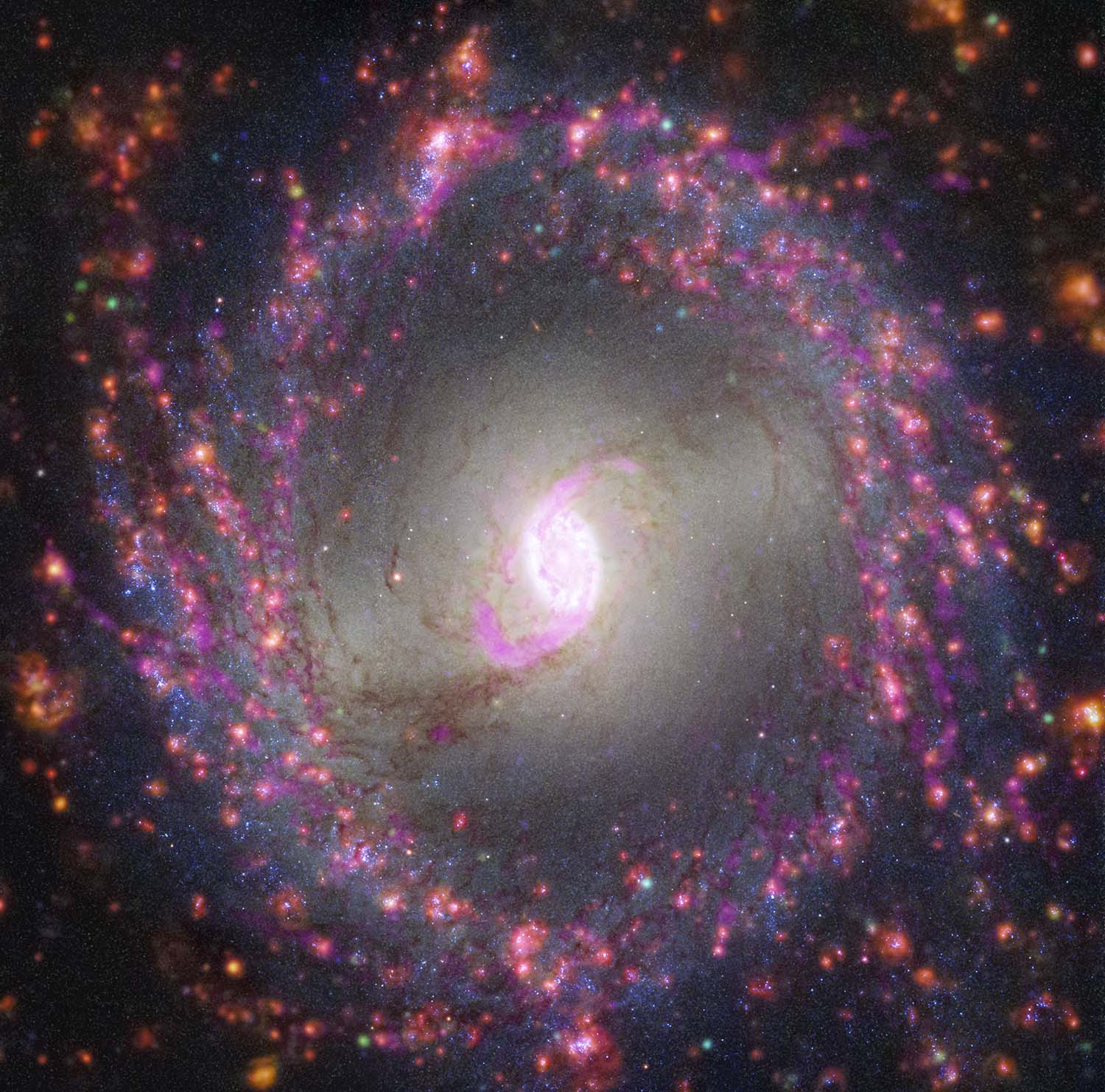STScI: Capturing All That Glitters in Galaxies with NASA’s Webb

An international research team will survey the stars, star clusters, and dust that lie within 19 nearby galaxies.
To understand galaxies, you have to understand how stars form. Over 100 researchers from around the world have collaborated to bring together observations of nearby spiral galaxies taken with the world’s most powerful radio, visible, and ultraviolet telescopes – and will soon add a full suite of high-resolution infrared images from NASA’s James Webb Space Telescope. With this groundbreaking data set, astronomers will be able to study stars as they start to form within dark, dusty gas clouds, untangle when those infant stars blow away that gas and dust, and identify more mature stars that are puffing off layers of gas and dust – all for the first time in a diverse set of spiral galaxies.
Spirals are some of the most captivating shapes in the universe. They appear in intricate seashells, carefully constructed spider webs, and even in the curls of ocean waves. Spirals on cosmic scales – as seen in galaxies – are even more arresting, not only for their beauty, but also for the overwhelming amount of information they contain. How do stars and star clusters form? Until recently, a complete answer used to lie out of reach, blocked by gas and dust. Within the first year of operations, NASA’s James Webb Space Telescope will help researchers complete a more detailed sketch of the stellar life cycle with high-resolution infrared-light images of 19 galaxies.
The telescope will also provide a few key “puzzle pieces” that were missing until now. “JWST touches on so many different phases of the stellar life cycle – all in tremendous resolution,” said Janice Lee, Gemini Observatory chief scientist at the National Science Foundation’s NOIRLab in Tucson, Arizona. “Webb will reveal star formation at its very earliest stages, right when gas collapses to form stars and heats up the surrounding dust.”
Lee is joined by David Thilker of the Johns Hopkins University in Baltimore, Maryland, Kathryn Kreckel of Heidelberg University in Germany, and 40 additional members of the multi-wavelength survey program known as PHANGS (Physics at High Angular resolution in Nearby GalaxieS). Their mission? Not only to unravel the mysteries of star formation with Webb’s high-resolution infrared images, but also to share the datasets with the entire astronomical community to accelerate discovery.
